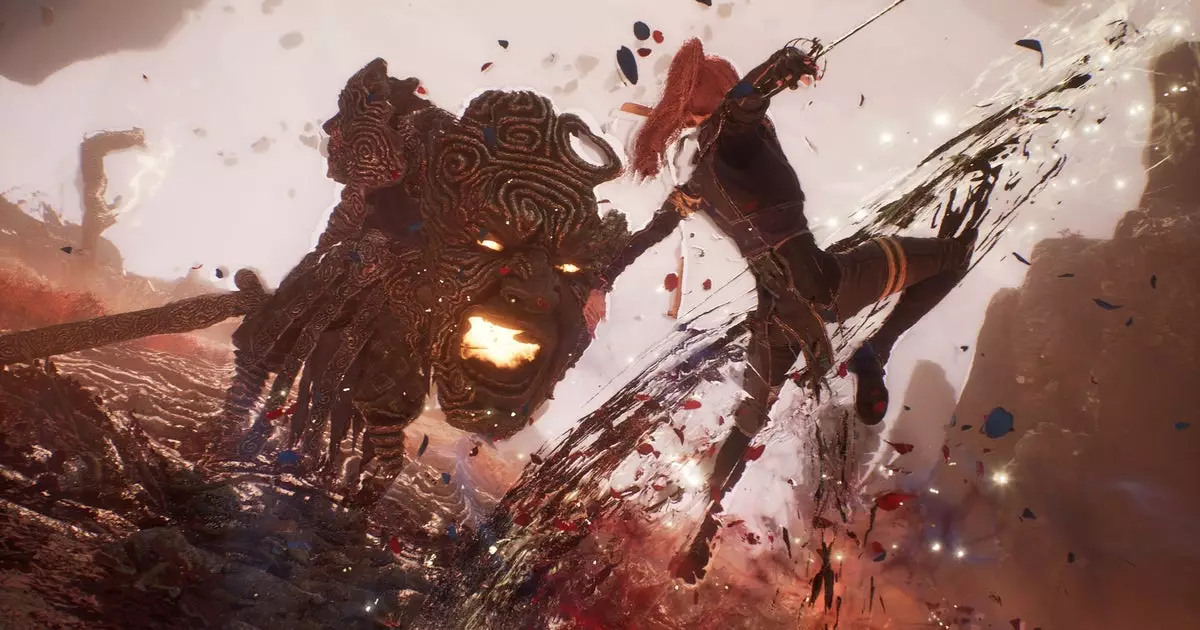In a world where turning 33 signifies a dire fate, the upcoming game “Clair Obscur: Expedition 33” sets a chilling tone right from the start. The premise distinctly reflects a fantastical yet bleak narrative: humanity faces an existential crisis as its lifespan is brutally abbreviated. This rather original premise engages the player not just as a participant in the game, but as a witness to the fragility of existence in a colorful yet perilous universe. The idea of a “mad paintress” with the power to dissolve lives into nothingness at will adds layers of intrigue, posing questions about power, mortality, and the nature of existence.
By employing a unique countdown mechanism, the game emphasizes urgency. Each year, individuals above a certain age simply vanish, leaving a desolate landscape filled with remnants of a once-thriving society reminiscent of late-nineteenth century France. This setting acts as a haunting backdrop for the narrative, where the players become engaged in not just survival, but also in securing a future for the characters they grow to care about.
Combat Mechanics and World Exploration
The blend of combat mechanics with exploration sets Clair Obscur apart from the typical templates of the JRPG genre. Drawing inspiration from popular titles like “Persona,” the game employs turn-based combat that promises strategic depth. Players can expect to encounter quick-time events (QTEs) that demand timely reflexes; however, the flexibility of opting out of these prompts allows for broader accessibility, appealing to a wider audience. This is particularly noteworthy as many modern games tend to either rely heavily on QTEs or mistakenly exclude them, often alienating certain player demographics.
The traversing of the world introduces an additional element of adventure. Utilizing unique mounts, like a beetle-like creature, players have the opportunity to explore expansive landscapes above and below water. This aspect not only enhances gameplay mechanics but also enriches the narrative. The choice of traversing with odd, fantastical creatures echoes both the whimsical and dark tones the game encapsulates, merging peculiar aesthetics with serious storytelling.
Thematic Resonance and Cultural Allusions
Thematically, “Clair Obscur” taps into heavy philosophical notions regarding mortality, the essence of life, and the societal structures that engulf humanity. As the game progresses, the landscape becomes a canvas reflecting the state of its inhabitants—vibrant yet plagued by the inevitability of loss. The game’s exploration of life stages compressed into fleeting moments taps into a universally relatable anxiety, sparking resonance with players on multiple levels. Such thematic depth will arguably elevate the experience from mere entertainment to a poignant commentary on life itself.
Culturally, the title “Clair Obscur” directly refers to the art technique known as chiaroscuro, which highlights contrasts between light and dark. This not only evokes the dualities present within the narrative—life and death, hope and despair—but suggests that players will engage in a struggle not just against tangible foes, but against the heavier concepts of fate and time. By subscribing to the complex naming conventions often seen in JRPGs, though potentially perplexing, it also pays homage to the genre’s penchant for intellectualism over simplicity.
As the release date of April 24th approaches, the anticipation surrounding “Clair Obscur: Expedition 33” intensifies. Encompassing a rich tapestry of themes, stunning visuals, and imaginative mechanics, the game is poised to attract both JRPG enthusiasts and newcomers alike. However, with such high expectations, it remains to be seen whether it can deliver on its ambitious premise. Will players emerge victorious from the clutches of mortality, or will they become just another whisper in the wind, lost to the ages? While the countdown ticks on, the hopes of many lie entwined within the fate of this unique gaming experience.


Leave a Reply